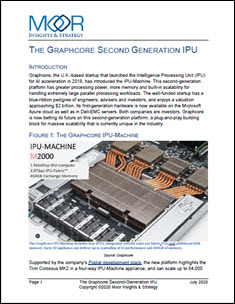The convergence of HPC and AI is driving a paradigm shift in computing. Learn about Intel’s software-first strategy to further accelerate this convergence and extend the boundaries of HPC as we know it today. oneAPI will ease application development and accelerate innovation in the xPU era. Intel delivers a diverse mix of scalar, vector, spatial, and matrix architectures deployed in a range of silicon platforms (such as CPUs, GPUs, FPGAs), and specialized accelerators—each being unified by an open, industry-standard programming model. The talk concludes with innovations in a new graphics architecture and the capabilities it will bring to the Argonne exascale system in 2021.
Intel Unveils New GPU Architecture and oneAPI Software Stack for HPC and AI
Today at SC19, Intel unveiled its new GPU architecture optimized for HPC and AI as well as an ambitious new software initiative called oneAPI that represents a paradigm shift from today’s single-architecture, single-vendor programming models. “HPC and AI workloads demand diverse architectures, ranging from CPUs, general-purpose GPUs and FPGAs, to more specialized deep learning NNPs which Intel demonstrated earlier this month,” said Raja Koduri, senior vice president, chief architect, and general manager of architecture, graphics and software at Intel. “Simplifying our customers’ ability to harness the power of diverse computing environments is paramount, and Intel is committed to taking a software-first approach that delivers unified and scalable abstraction for heterogeneous architectures.”
The Pending Age of Exascale
In this special guest feature from Scientific Computing World, Robert Roe looks at advances in exascale computing and the impact of AI on HPC development. “There is a lot of co-development, AI and HPC are not mutually exclusive. They both need high-speed interconnects and very fast storage. It just so happens that AI functions better on GPUs. HPC has GPUs in abundance, so they mix very well.”
Podcast: Intel to Deliver Exascale for the Advancement of Science
In this Chip Chat podcast, Trish Damkroger from Intel outlines a few of the key technologies coming to the Aurora supercomputer in 2021. To enable Exascale levels of performance, Aurora will be built with a future generation Intel Xeon Scalable processor, the recently announced Intel Xe compute architecture, and Intel Optane DC persistent memory. Built by subcontractor Cray, Aurora will enable ground-breaking science such as precision medicine, climate modeling, weather forecasting, and materials science.







